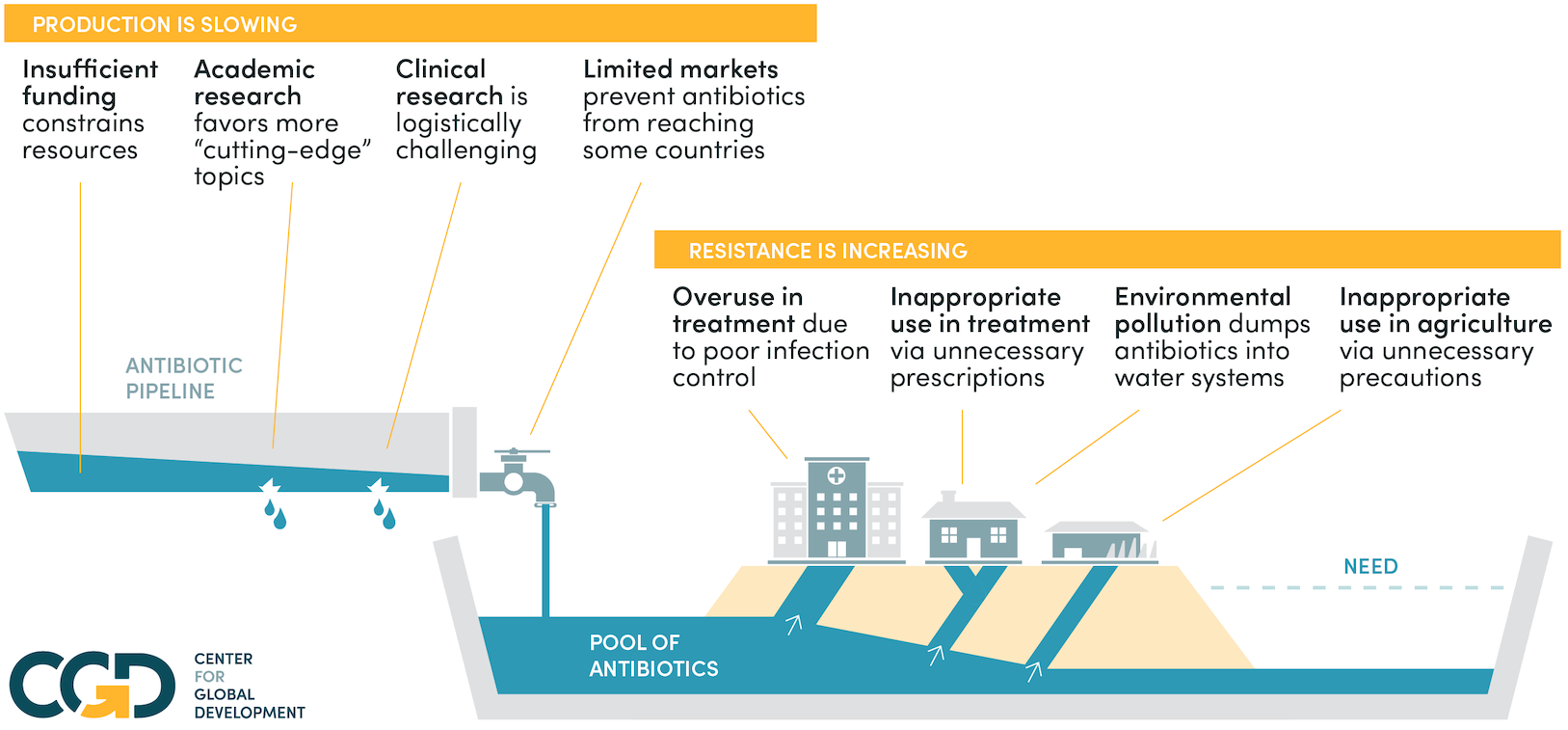As some of you may know, CGD’s Drug Resistance Working Group released a report this summer, providing a comprehensive examination of drug resistance—across different diseases, geographies, and stakeholders. The report highlights alarmingly high rates of drug resistance throughout the world and warns of a growing public health crisis as more and more drugs lose their efficacy. One of the important findings of our work is that common drivers across diseases are causing treatments to fail.We have received very positive feedback since publishing the report in June. However, we are acutely aware that talk is cheap. Simply writing what needs to be done (much to the chagrin of my co-authors and myself!) is far easier than actually doing it. Since the report was published, we have been working with a range of organizations to advance the ideas and see them implemented.A critical place to begin a common response to drug resistance –our report puts this first among four major recommendations – is to collect and share drug resistance information across disease networks. The working group report recommended that the many organizations that gather information about drug resistance should join forces to identify gaps in public health and clinical knowledge about where and when drugs aren’t working, and produce a biannual global drug resistance report to inform donors and public health agencies. I’m pleased to share that a “network of drug resistance surveillance networks” seems to be within reach.We are working with others to form a coalition of drug resistance surveillance networks and private companies that have stated their intention to share information, methods and tools for detecting and documenting drug resistance. This would mean antimicrobial resistance people would talk to malaria resistance people (for a change) and hopefully, create a rapid diagnostic test to differentiate between malaria and pneumonia, for instance before dispensing the wrong drug and waiting to see if the fever worsens. It could mean that regions with strong TB surveillance but weak information about Strep pneumonia drug resistance might find ways to build on existing infrastructure to improve health outcomes.The working group proposed that such a network eventually produce a biannual report of global drug resistance across diseases so that policymakers, public health agencies, and clinicians understand what they are up against, identify the gaps in knowledge, and begin to turn the tide on drug resistance. The first step of bringing together the disease-specific surveillance networks is being planned. Let’s hope the interest and momentum continue to build.Addendum: While we’re speaking about improving diagnosis … the long-awaited announcement of a new fast-acting and reliable Tuberculosis (TB) diagnostic test last month sent ripples of anticipation through the TB community. As reported in the New England Journal of Medicine, the new molecular test can reduce the time to diagnose TB from 10 days to less than two hours. This test is a huge advance from the standard sputum smear test that has been used for many decades to identify TB. Not only can it diagnose drug-sensitive TB, the Xpert test can bypass the slow process of culturing a sputum sample for drug sensitivity and determine whether a case is Rifampin drug-resistant. And the test works with 97% accuracy to detect confirmed TB cases.The promise of this new TB diagnostic is great for several reasons. First, simple public health. Almost 40% of estimated TB cases remained undetected (2008 figures), and therefore untreated. Only about one in ten cases of drug-resistant TB is estimated to be detected, and a small fraction of those are treated properly. These figures are tragic and illustrate once again that TB has been neglected. A new technology is way overdue to detect TB. Second, this test can be used by less skilled lab workers than the standard methods of culturing currently employed. The result can be faster results from a more extensive group of facilities. Finally, I am optimistic about the potential for molecular tests – such as Xpert – to revolutionize laboratory work by de-specializing the resources and procedures needed for disease diagnosis and drug susceptibility testing. Cross-disease labs should become the norm, replacing specialized labs. All these advances are envisioned in the Working Group’s recommendation #1: improve the ability to detect and monitor resistance. New technology and human willingness to work together, combined, will make this a reality.For more on CGD’s drug resistance work, please sign up for or visit our monthly e-newsletter.
CGD blog posts reflect the views of the authors, drawing on prior research and experience in their areas of expertise.
CGD is a nonpartisan, independent organization and does not take institutional positions.





